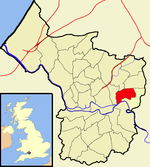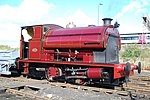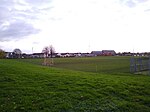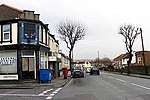Crew's Hole, Bristol
Areas of BristolEngvarB from October 2013

Crew's Hole is an area in east Bristol near St George. It is next to the River Avon, two miles upstream from Bristol Bridge.From the early 18th century it began to be used extensively as an industrial area. The Bristol Brass Company began copper smelting in 1810 at Crew's Hole, and later expanded with a chimney further uphill which gave a better draught condition for the furnaces. Anthony Ammatt established a pottery at Crew's Hole in 1812, using clay transported from the Isle of Wight and Poole. Several bargeworks were built here during the 19th century.
Excerpt from the Wikipedia article Crew's Hole, Bristol (License: CC BY-SA 3.0, Authors, Images).Crew's Hole, Bristol
The Avenue, Bristol St George
Geographical coordinates (GPS) Address Nearby Places Show on map
Geographical coordinates (GPS)
| Latitude | Longitude |
|---|---|
| N 51.4592 ° | E -2.5411 ° |
Address
The Avenue
The Avenue
BS5 8HL Bristol, St George
England, United Kingdom
Open on Google Maps










